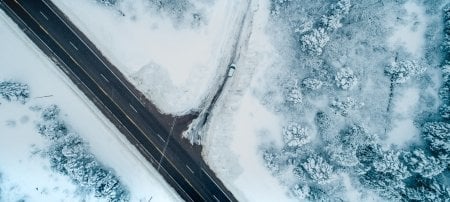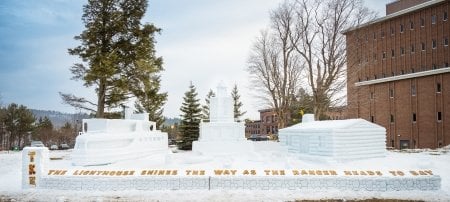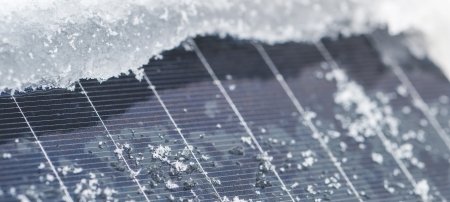Michigan Tech Researcher Grooms Snow Roads in Antarctica

It’s spring in Antarctica, 50 degrees below zero, with a constant blustery wind. Perfect for traveling in and out of McMurdo Station.
That’s because the offshore frozen ocean provides a reliable landing strip within a mile or so of McMurdo. Come summer, the sea ice melts, and planes have to land on the Pegasus Runway.
The Pegasus Runway sits on a glacier fifteen miles distant from this small research outpost on Ross Island. It’s so far away because good locations for landing strips are in short supply. The snow can get soft nearer McMurdo Station, a nasty business for pilots trying to land an aircraft. It’s easier to maintain a runway farther inland, but sometimes, just traveling out to Pegasus and back in summer is an adventure.
Fortunately, all that hassle may soon melt away. Russ Alger has been working for two decades on a special groomer that can turn powder into pavement, and it looks like after all these years of tinkering, it’s finally snow time.
Alger, the director of Michigan Technological University’s Institute for Snow Research, paid a springtime visit to McMurdo Station in November to test his groomer on the nearby Ross Ice Shelf, where the snow is hundreds of feet deep. All but the top 50 feet is compressed into glacial ice by the weight above. That topmost cushion is the problem.
“It’s difficult to compress this soft snow into a snow pavement because there’s so much more soft snow beneath it,” he says. “That’s the trick I’m trying to do with my groomer.”
The groomer works by milling the snow to break down all the flakes and crystals. “Then we run a vibrating compactor over it to get the air out,” says Alger. “It’s very much like preparing a regular roadway,” except with snow instead of dirt.
In the dry Antarctic environment, it can take a couple of days for the hard snow pavement to set up. But set up it does, forming a solid layer, as much as six inches thick per pass on top of the soft snow.
Alger conducted measurements on one of his test sections of roadway and determined it could stand up to a four-door Ford F350 pickup. “I talked the fleet supervisor into driving her truck out onto it,” he said. “She was super surprised at the results. Not only didn’t her truck fall through, it didn’t even make tracks. It worked!”
Then he took a 35,500-pound tractor out on the same test section, and still the roadway held. Alger has since returned home, but the groomer remains on duty at McMurdo Station. “It’s still being tested, and we are getting good results,” he said. “So far, so good.”
The only hitch has been providing the groomer with enough power to do its job properly, and Alger plans to return to McMurdo during the next Antarctic summer to install a new power pack.
“For sure we will be able to build snow roads,” he says, which will make travel to the Pegasus Runway faster and less problematic. Ideally, the groomer could turn the soft snow nearer McMurdo into a surface that could safely support air traffic. Nothing would make Alger happier. “My dream is to do a runway,” he says.
Michigan Technological University is a public research university founded in 1885 in Houghton, Michigan, and is home to more than 7,000 students from 55 countries around the world. Consistently ranked among the best universities in the country for return on investment, Michigan’s flagship technological university offers more than 120 undergraduate and graduate degree programs in science and technology, engineering, computing, forestry, business and economics, health professions, humanities, mathematics, social sciences, and the arts. The rural campus is situated just miles from Lake Superior in Michigan's Upper Peninsula, offering year-round opportunities for outdoor adventure.




Comments